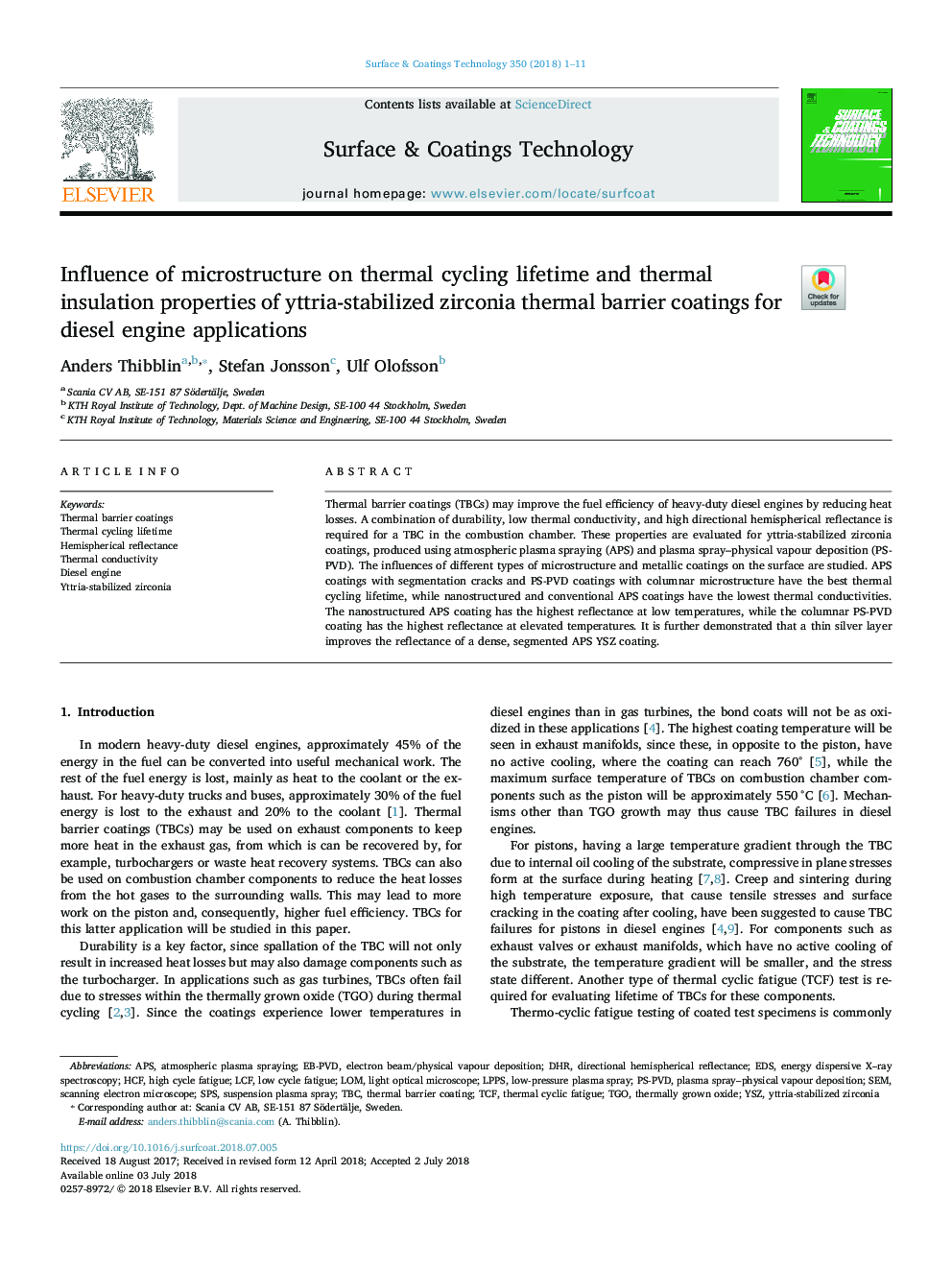| Article ID | Journal | Published Year | Pages | File Type |
|---|---|---|---|---|
| 8023392 | Surface and Coatings Technology | 2018 | 11 Pages |
Abstract
Thermal barrier coatings (TBCs) may improve the fuel efficiency of heavy-duty diesel engines by reducing heat losses. A combination of durability, low thermal conductivity, and high directional hemispherical reflectance is required for a TBC in the combustion chamber. These properties are evaluated for yttria-stabilized zirconia coatings, produced using atmospheric plasma spraying (APS) and plasma spray-physical vapour deposition (PS-PVD). The influences of different types of microstructure and metallic coatings on the surface are studied. APS coatings with segmentation cracks and PS-PVD coatings with columnar microstructure have the best thermal cycling lifetime, while nanostructured and conventional APS coatings have the lowest thermal conductivities. The nanostructured APS coating has the highest reflectance at low temperatures, while the columnar PS-PVD coating has the highest reflectance at elevated temperatures. It is further demonstrated that a thin silver layer improves the reflectance of a dense, segmented APS YSZ coating.
Keywords
TGOLow-pressure plasma sprayLCFThermal cycling lifetimePS-PVDEB-PVDHCFDHRLPPSTCFYSZSPSEDSTBCAPsSuspension plasma sprayThermally grown oxideHigh Cycle Fatiguelow cycle fatigueThermal conductivityYttria-stabilized zirconiaLOMSEMDiesel enginescanning electron microscopeAtmospheric plasma sprayingThermal barrier coatingThermal barrier coatings
Related Topics
Physical Sciences and Engineering
Materials Science
Nanotechnology
Authors
Anders Thibblin, Stefan Jonsson, Ulf Olofsson,
